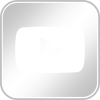Recent research on how the brain learns to read is an area that is both fascinating and important. What happens as a child learns to read, what anatomical changes are made in the brain, and how does this information affect the way we teach reading?
A 20 minute video presentation “How the Brain Learns to Read” by Prof. Stanislas Dehaene, published on Oct 25, 2013, http://www.wise-qatar.org/stanislas-dehaene, highlights some key issues.
I was “blown away” by a half-second video showing how different areas of the left hemisphere of the brain were lit up in turn as a person reads a word. The information travels from the visual area of the occipital lobe (at the back of the brain) to an area that Prof Dehaene calls the brain’s “letterbox” where we store our knowledge of letters, and then into at least two networks of the left hemisphere – the areas dealing with (1) the meaning of words and (2) their pronunciation.
Learning to read produces anatomical changes in the brain. What did the brain’s “letterbox” do before a person could read? It recognised faces and objects. Directions did not matter. This explains the difficulties of mirror reading and writing experienced by children as they learn to read and write. Eventually the function of recognising faces is displaced to the right hemisphere of the brain.
Prof Dehaene addresses some implications of brain research on the classical question of phonics verses whole word training. He shows graphs of reading time vs number of letters in a word. As children learn more, 1st to 3rd grade, they read words more quickly. But, the slope of the graphs also decreases, i.e. they still take longer to read longer words, but the effect lessens with older children. This leads to the illusion of whole word reading where the brain still processes every letter, but simultaneously in what is known as parallel reading.
Pathways, as well as regions of the brain, are changed as someone learns to read. Prof Dehaene concludes that teaching letter-sound correspondences is essential and is the fastest way to acquire both reading and comprehension. “Letters to sounds” is one of the main pathways in the brain that is being transformed as children learn to read. This then allows self-teaching. Children work out the words (using the letters to sounds pathway), know their meaning (sounds to meaning pathway), and can then train the direct route between letters and meaning (letters to meaning pathway).
I have ordered his book, Reading in the Brain, and am looking forward to learning more details of this fascinating area of how the brain learns to read from one of the world leaders in this field. It looks like it will be an exciting journey.




{ 0 comments… add one now }